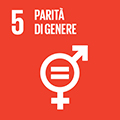- Docente: Lorenzo Zambernardi
- Crediti formativi: 10
- SSD: SPS/04
- Lingua di insegnamento: Inglese
- Moduli: Lorenzo Zambernardi (Modulo Lez.) Lorenzo Maria Cello (Modulo Sem.)
- Modalità didattica: Convenzionale - Lezioni in presenza (Modulo Lez.) Convenzionale - Lezioni in presenza (Modulo Sem.)
- Campus: Bologna
- Corso: Laurea in Scienze politiche, sociali e internazionali (cod. 8853)
-
Orario delle lezioni (Modulo Lez.)
dal 20/02/2024 al 05/04/2024
-
Orario delle lezioni (Modulo Sem.)
dal 15/04/2024 al 17/05/2024
Conoscenze e abilità da conseguire
The course deals with some basic themes, concepts and thinkers in international relations. The purpose is to provide students with essential conceptual and linguistic tools for understanding the underlying structure and fundamental features of international politics, as well as its material and immaterial changing aspects. The objective is to explain the dynamics through which men and women understand international politics as well as on achieving a coherent capacity of thinking international life, both in its theoretical and practical dimension.
Contenuti
The course examines the most important theories of international politics and foreign policy, with a particular focus on constructivism, liberalism, and realism. We will also study some key concepts of international relations such as the balance of power, hegemony, war, and cooperation.
Testi/Bibliografia
Prof. Zambernardi
1. Introduction
- No readings
2. Understanding International Relations
- Grieco, J., Ikenberry, G.J., and Mastanduno, M. Introduction to International Relations: Perspectives, Connections, and Enduring Questions, Second Edition (Macmillan, 2022), Ch. 1
3. The Emergence of the Global System of States
- Grieco, Ikenberry, and Mastanduno, Ch. 2
4. Realism I
- Thucydides, “The Melian Dialogue,” History of the Peloponnesian War, V, 84-116.
5. Realism II
- Grieco, Ikenberry, and Mastanduno, pp. 82-90.
6. Neorealism
- Waltz, K., "The Origins of War in Neorealist Theory", Journal of Interdisciplinary History, Vol. 18, No. 4, pp. 615-628.
7. Liberalism I
- Grieco, Ikenberry, and Mastanduno, pp. 90-98
8. Liberalism II
- Kant, I. Perpetual Peace, any edition.
9. Cooperation and International Institutions
- Grieco, Ikenberry, and Mastanduno, Ch. 5
10. Constructivism I
- Grieco, Ikenberry, and Mastanduno, 99-121
11. Constructivism II
- Wendt, A. 1999, Social Theory of International Politics, CH. 6.
12. The Analysis of Foreign Policy
- Grieco, Ikenberry, and Mastanduno, Ch. 4
13. Pathways to Interstate Peace
- Grieco, Ikenberry, and Mastanduno, Ch. 7
14. Wealth and Power
- Grieco, Ikenberry, and Mastanduno, Ch. 9
15. Counterterrorism in Sahel between regional and international dynamics
- No reading
16. Facing the Future: Visions of an Emerging International Order
- Grieco, Ikenberry, and Mastanduno, Ch. 14
Prof. Cello:
1) Theorising International Relations (IR)
Smith, Steve (2016) ‘Introduction: Diversity and Disciplinarity in International Relations Theory’, in Tim Dunne, Milja Kurki and Steve Smith (eds) International Relations Theories: Discipline and Diversity, Fourth edition. Oxford: Oxford University Press. Introduction.
2) The Contested Meaning of Sovereignty
Jackson, Robert (2007) Sovereignty (Cambridge: Polity): Chapter 1.
Glanville, Luke (2014) Sovereignty and the Responsibility to Protect: A New History(Chicago: Chicago University Press): Introduction.
3) Human Security
Tim Dunne and Nicholas J. Wheeler, “‘We the peoples’ Contending discourses of security in human rights theory and practice” in Critical Perspectives on Human Security : Rethinking Emancipation and Power in International Relations(London: Taylor & Francis Group, 2010): 13-27.
Paul D. Williams, and Matt McDonald, ‘Introduction’ in Security Studies: An Introduction (Taylor & Francis Group: 2018): 1-13.
4) Understanding the Concept of Anarchy in IR
Kenneth N. Waltz (1988) “The Origins of War in Neorealist Theory”, Journal of Interdisciplinary History 18(4): 615-28.
Wendt, Alexander (1992) ‘Anarchy is What States Make of It: The Social Construction of Power Politics’, International Organization 46(2): 391-426.
5) The English School
Tim Dunne “The English School” (2016) in Tim Dunne, Milja Kurki and Steve Smith (eds) International Relations Theories: Discipline and Diversity, Fourth edition. Oxford: Oxford University Press: Chapter 7.
6) The End of the Liberal International Order?
Ikenberry, John (2009) ‘Liberal Internationalism 3.0’, Perspectives on Politics 7(1): 71-87.
7) The evolution of an ‘International Society’ and the Post-colonial critique
Tim Dunne and Christian Reus-Smit, The Globalization of International Society(Oxford, Oxford University Press: 2017): Introduction and Conclusion.
8) Structuralism vs Post-structuralism in IR
Devetak, Richard (2013) ‘Post-structuralism’ in Theories of International Relations, Scott Burchill et al (eds.), (Basingstoke: Palgrave Macmillan).
9) Marxism and Hierarchies in IR
Bially Mattern, Janice and Ayşe Zarakol (2016) ‘Hierarchies in World Politics’,International Organization 70(3): 39-75.
Hobson, John and Jason Sharman (2005) ‘The Enduring Place of Hierarchy in World Politics’, European Journal of International Relations 11(1): 63-98.
10) Gender and Feminism in IR
J Ann Tickner, Jacqui True (2018), A Century of International Relations Feminism: From World War I Women's Peace Pragmatism to the Women, Peace and Security Agenda, International Studies Quarterly, Volume 62, Issue 2: 221–233.
11) Theorising Causes of War
Steve Smith, 'War and Human Nature', in Ian Forbes and Steve Smith (eds.), Politics and Human Nature (1983), chapter 11.
Brown, S., The causes and prevention of war (New York, Martin's Press: 1994): Chapter 1.
12) The Changing Character of Warfare in the digital age
Kaempf, Sebastian (2013) 'The mediatisation of war in a transforming global media landscape' [http://www.tandfonline.com/doi/full/10.1080/10357718.2013.817527#.UmhnYSRhOjQ], Australian Journal of International Affairs 67/5, pp. 586-604.
13) Global Visual Politics and the ‘visual turn’
Bleiker, Roland. Visual Global Politics(New York: Routledge, 2018): Introduction.
Metodi didattici
Lectures and seminars.
“In considerazione della tipologia di attività e dei metodi didattici adottati, la frequenza di questa attività formativa richiede la preventiva partecipazione di tutti gli studenti ai Moduli 1 e 2 di formazione sulla sicurezza nei luoghi di studio, [https://elearning-sicurezza.unibo.it/] in modalità e-learning.
Modalità di verifica e valutazione dell'apprendimento
ATTENDING STUDENTS: two written exams (three questions for each exam in 30 minutes) on the above readings and lectures.
Non-attending students: written exam (from 6 to 10 questions) and an oral exam on the above readings and the following book:
Zambernardi, L. 2022. Life, Death, and the Western Way of War (Oxford: Oxford University Press).
Strumenti a supporto della didattica
Teams, Power point, video
Orario di ricevimento
Consulta il sito web di Lorenzo Zambernardi
Consulta il sito web di Lorenzo Maria Cello
SDGs



L'insegnamento contribuisce al perseguimento degli Obiettivi di Sviluppo Sostenibile dell'Agenda 2030 dell'ONU.
